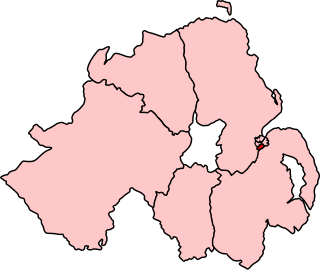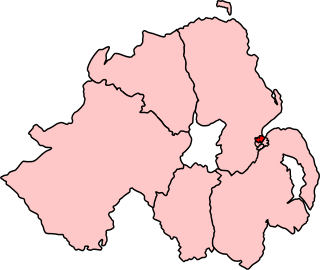Summary of Representation of Constituencies
Key to Parties: N Nationalist, Rep Republican, SF Sinn Féin, U Ulster Unionist
- 1921-1925 U 6, N 1, SF 1 (1st Parliament)
- 1925-1929 U 6, N 1, Rep 1 (2nd Parliament)
Notes:-
Down is one of the six counties comprising Northern Ireland.
County Down was represented in the Northern Ireland House of Commons 1921–1973. This article deals with the Down County constituencies. For the County Down Borough constituencies in the City of Belfast, see Belfast (Northern Ireland Parliament constituencies). See also the List of Northern Ireland Parliament constituencies 1921-1973.
1921-1929: The part of County Down not included in the Belfast seats was an eight-member constituency, electing MPs using the single transferable vote method of proportional representation. There was a two-member UK Parliament constituency of Down, 1922–1950, with the same boundaries.
1929-1969: The area was divided into eight single member divisions, electing MPs using the first past the post electoral system. From north to south the divisions were:-
1969-1973: Under the Electoral Law Act (Northern Ireland) 1968, the four member Queen's University of Belfast constituency was abolished in 1969. Two of its seats were re-allocated to Down. The new divisions of Bangor and Lagan Valley affected the boundaries of the existing Mid and North seats.
Key to Parties: N Nationalist, Rep Republican, SF Sinn Féin, U Ulster Unionist
Notes:-
In this list the multi member constituency (1921–29) is referred to as DOWN.
In 1921 Sinn Féin decided to use the UK authorised elections for the Northern Ireland House of Commons and the House of Commons of Southern Ireland as a poll for the Irish Republic's Second Dáil. This area, in republican theory, was the eight-member Dáil constituency of Down.
East Down was a UK Parliament constituency in Ireland which returned one Member of Parliament from 1885 to 1922, using the first past the post electoral system.
West Down was a UK Parliament constituency in Ireland which returned one Member of Parliament from 1885 to 1922, using the first past the post electoral system.
Cromac, a division of Belfast, was a UK parliamentary constituency in Ireland. It returned one Member of Parliament (MP) to the House of Commons of the United Kingdom from 1918 to 1922, using the first past the post electoral system.
Duncairn, a division of Belfast, was a UK parliamentary constituency in Ireland. It returned one Member of Parliament (MP) to the House of Commons of the United Kingdom from 1918 to 1922, using the first past the post electoral system.
Falls, a division of Belfast, was a UK parliamentary constituency in Ireland. It returned one Member of Parliament (MP) to the House of Commons of the United Kingdom from 1918 to 1922, using the first past the post electoral system.
Ormeau, a division of Belfast, was a UK parliamentary constituency in Ireland. It returned one Member of Parliament (MP) to the House of Commons of the United Kingdom from 1918 to 1922, using the first past the post electoral system.
Pottinger, a division of Belfast, was a UK parliamentary constituency in Ireland. It returned one Member of Parliament (MP) to the House of Commons of the United Kingdom from 1918 to 1922, using the first past the post electoral system.
Shankill, a division of Belfast, was a UK parliamentary constituency in Northern Ireland. It returned one Member of Parliament (MP) to the House of Commons of the United Kingdom from 1918 to 1922, using the first past the post electoral system.
St Anne's, a division of Belfast, was a UK parliamentary constituency in Ireland. It returned one Member of Parliament (MP) to the House of Commons of the United Kingdom from 1918 to 1922, using the first past the post electoral system.
Victoria, a division of Belfast, was a UK parliamentary constituency in Ireland. It returned one Member of Parliament (MP) to the House of Commons of the United Kingdom from 1918 to 1922, using the first past the post electoral system.
Woodvale, a division of Belfast, was a UK parliamentary constituency in Ireland. It returned one Member of Parliament (MP) to the House of Commons of the United Kingdom from 1918 to 1922, using the first past the post electoral system.
Mid Down was a UK parliamentary constituency in Ireland. It returned one Member of Parliament (MP) to the British House of Commons from 1918 to 1922, using the first past the post electoral system.
Fermanagh and Tyrone are two of the six counties comprising Northern Ireland.

The Government of Ireland Act 1920 was an Act passed by the Parliament of the United Kingdom to create two separate parliaments in Ireland: the Parliament of Northern Ireland and the Parliament of Southern Ireland. The Fifth Schedule to this act provided the constituencies for the House of Commons in these two separate parliaments. These same constituencies also replaced those provided in the Redistribution of Seats (Ireland) Act 1918 for representation of Ireland in the House of Commons of the United Kingdom at Westminster. Sinn Féin used these constituencies to elect the Second Dáil (1921–22) and those constituencies in Southern Ireland were used to elect the Third Dáil (1922–23).
Mid Antrim was a UK Parliament constituency in Ireland which returned one Member of Parliament from 1885 to 1922, using the first past the post electoral system.

Belfast West was a borough constituency of the Parliament of Northern Ireland from 1921 to 1929. It returned four MPs, using proportional representation by means of the single transferable vote.

Belfast South was a borough constituency of the Parliament of Northern Ireland from 1921 to 1929. It returned four MPs, using proportional representation by means of the single transferable vote.

Belfast East was a borough constituency of the Parliament of Northern Ireland from 1921 to 1929. It returned four MPs, using proportional representation by means of the single transferable vote.

Belfast North was a borough constituency of the Parliament of Northern Ireland from 1921 to 1929. It returned four MPs, using proportional representation by means of the single transferable vote.

Down was a county constituency of the Parliament of Northern Ireland from 1921 to 1929. It returned eight MPs, using proportional representation by means of the single transferable vote.